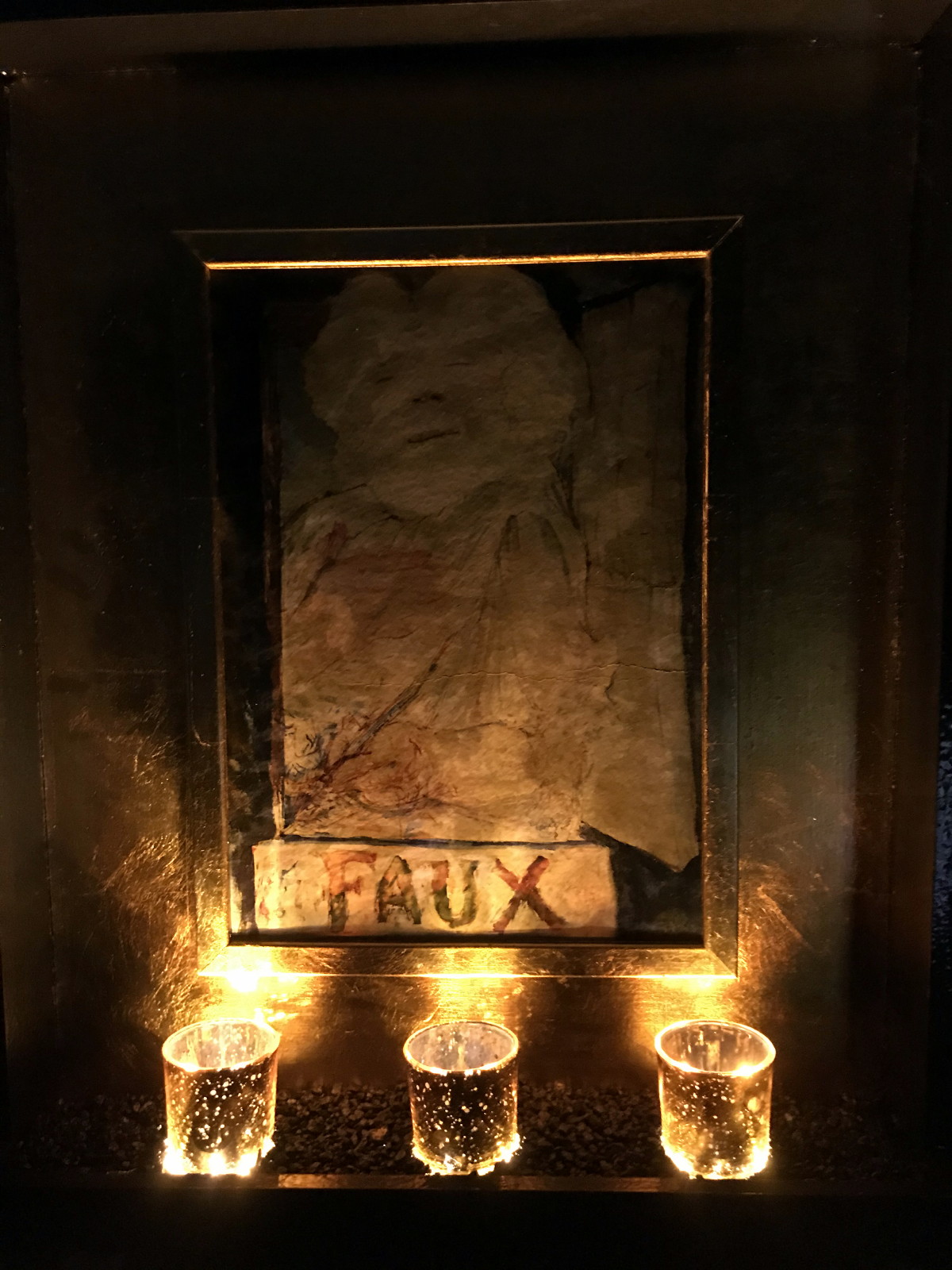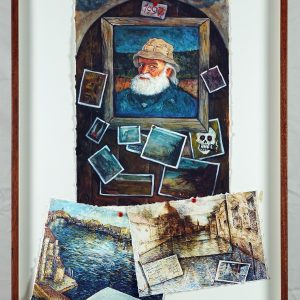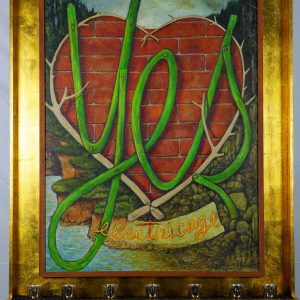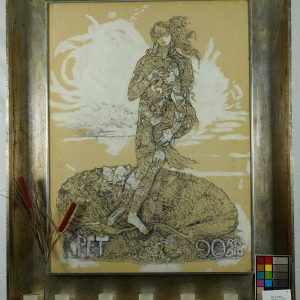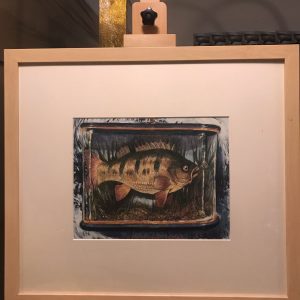Description
A reproduction of the original FAUX by Bob Camblin
Lighted reliquary
13.25 x 9.5 in. (image)
22.5 x 18.5 x 4 in. (frame)
The giclée “FAUX” features a bust or head in what appears to be a window or framed setting, with the word “FAUX” prominently displayed below it. The figure has a flowing beard and a somewhat serene expression, with closed eyes that suggest sleep, peace, or satirical humility. The style employs loose, fluid brushstrokes that create a dreamlike or ethereal quality. There is a strong emphasis on texture, with areas of vivid color blending together in an impressionistic manner.
In Zen philosophy, the concept of “faux” (meaning false or artificial in French) aligns with the idea of illusion or the illusory nature of the self and material reality. The serene expression and closed eyes of the figure might symbolize a meditative state, where the practitioner detaches from the illusion of the self, realizing the impermanence of all forms. The figure’s placement behind a frame could suggest the separation between true being and the illusion we create for ourselves. Zen practice involves seeing through these layers of artificial constructs to reach a state of pure awareness.
The I Ching, an ancient Chinese divination text, often deals with the duality between the authentic and the inauthentic, and the challenges of understanding the true essence behind appearances. This image might resonate with Hexagram 61, “Inner Truth” (Zhong Fu), which emphasizes sincerity and the importance of looking beyond external representations. In this case, the “faux” quality of the artwork could suggest the struggle to discern real truth from superficial illusion, encouraging viewers to meditate on what lies beyond surface appearances.
Combining Zen and I Ching perspectives, the artwork reflects the theme of transcending illusion to find inner truth. The word “FAUX” suggests a critique of materialism or the artificial nature of societal norms. The figure’s peaceful demeanor may invite the viewer to look inward and recognize the façade that society often places upon us. It encourages breaking through external forms, realizing the unity of all things, and understanding that even the notion of “real” versus “fake” is a construct to be dissolved.
The style of this painting draws on expressionism, with elements of surrealism. The approach to form and color could be associated with artists who explored themes of spirituality and existentialism, like Odilon Redon or Marc Chagall. The word “FAUX” may echo movements in conceptual art where language and text challenge the viewer’s perception of reality, similar to how René Magritte’s “Ceci n’est pas une pipe” questioned the nature of representation itself.

